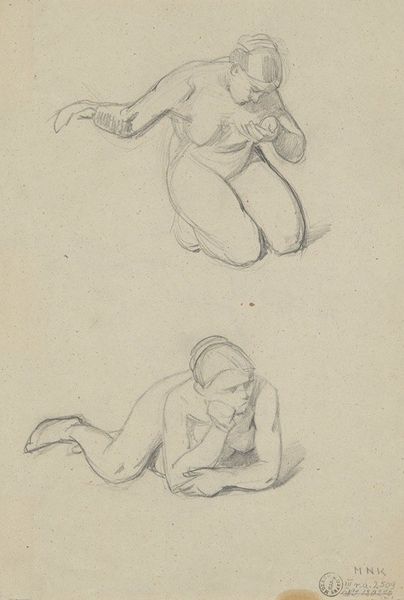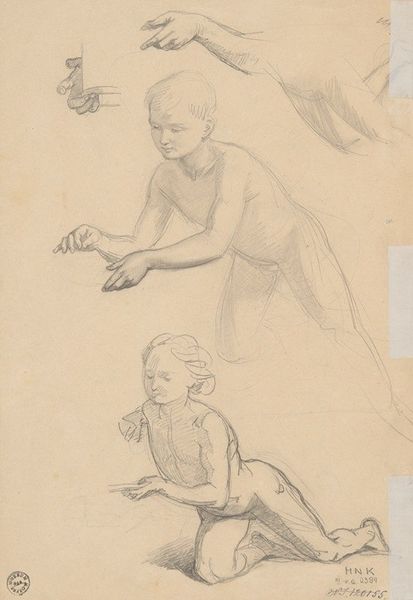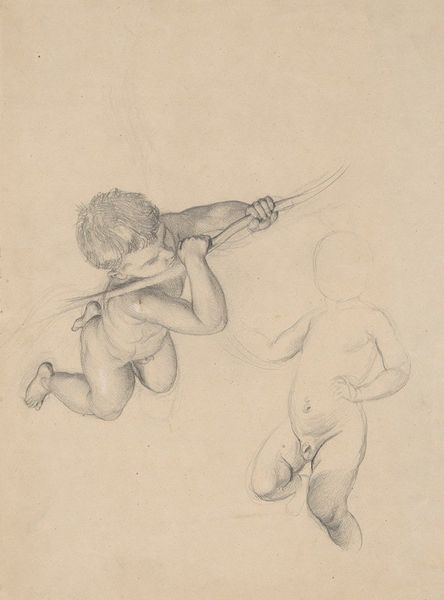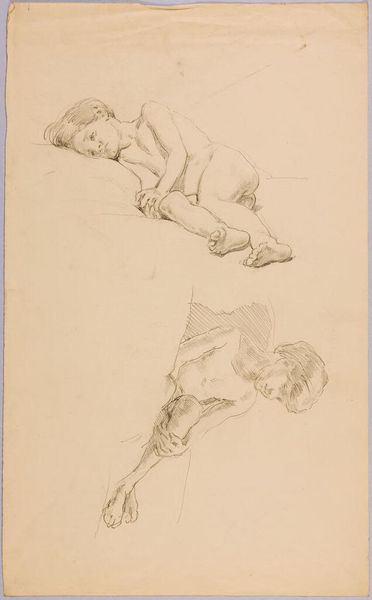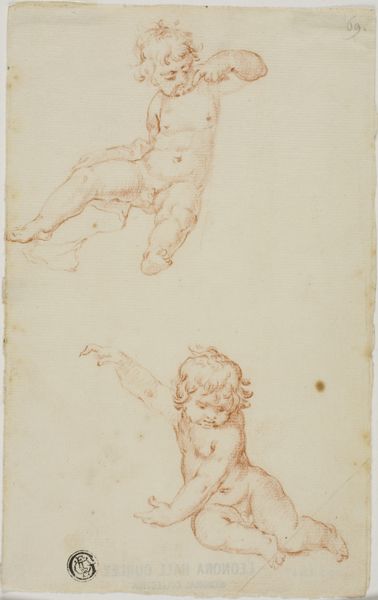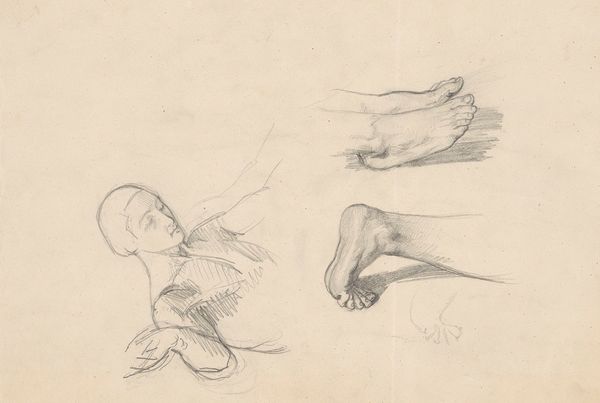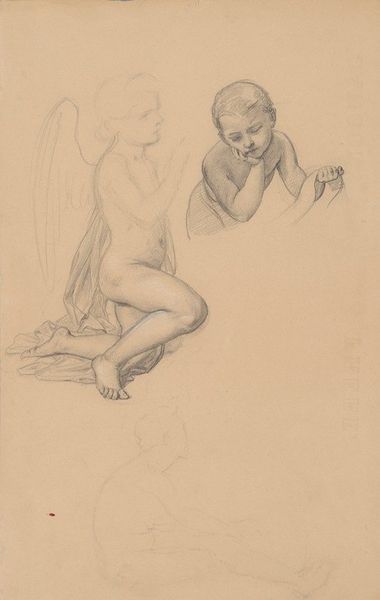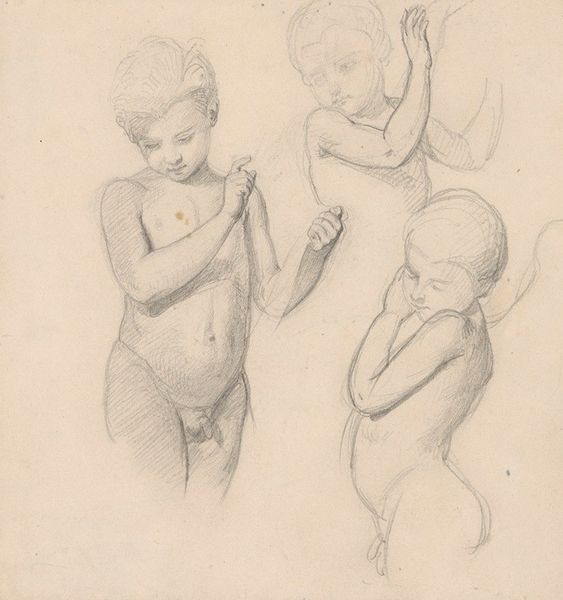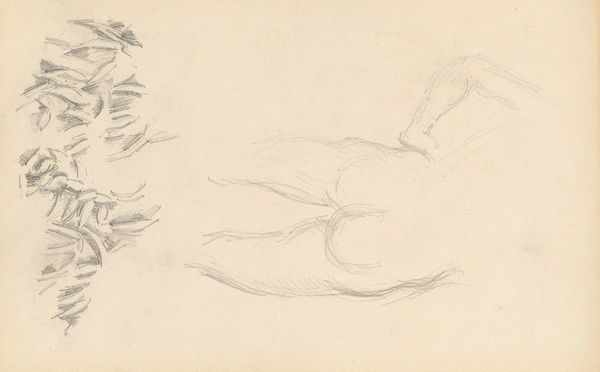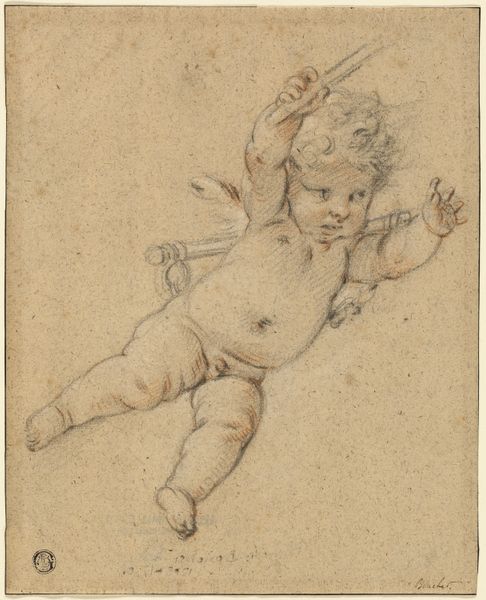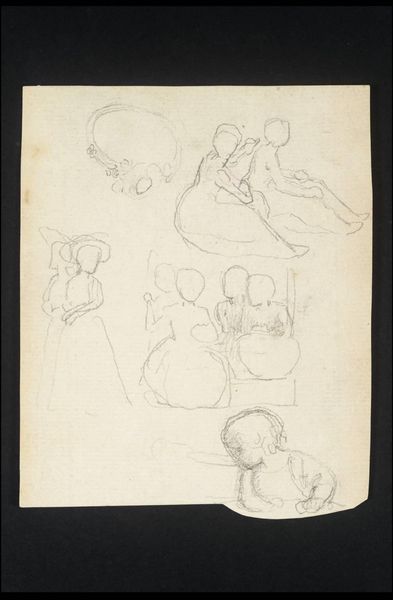
Studies of boys’ nudes to the ceiling ‘Wedding procession of Cupid and Psyche’ 1863
0:00
0:00
drawing, pencil
#
drawing
#
figuration
#
pencil drawing
#
pencil
#
academic-art
#
nude
#
realism
Copyright: Public Domain: Artvee
Curator: What strikes me most immediately about this piece are the graceful, almost ethereal poses of the figures. Editor: Indeed. The artist, Józef Simmler, created these Studies of boys’ nudes to the ceiling ‘Wedding procession of Cupid and Psyche’ in 1863, as preparatory sketches. You can clearly see the academic art influence in the way he renders form and anatomy using pencil. Curator: Preparatory sketches, you say? Looking closely, I’m interested in the paper itself. Was this common paper available for artists to create drawings of that time, and were these considered finished artworks, or merely byproducts of the "real" work? I’m also curious, were these figures based on living children, given how natural their postures seem? The production method piques my curiosity, challenging that fine art label by focusing instead on the labor. Editor: Excellent points. Within the broader context of 19th-century academic art, we see that drawing and sketching held significant value, particularly within institutions such as academies. Simmler was preparing to complete a large-scale, multi-figure painting. So, it's plausible these served both a functional purpose and showcased the artist’s technical ability to potential patrons and even to his academic peers. In that sense they become very important pieces on their own merit, beyond merely “sketches.” Curator: You raise an interesting issue on value! Speaking to the institutional influences, one considers the socio-political environment around depictions of the nude form and the artist's intentions. How would you say that shapes how these nudes may be received in society back then, if at all? Editor: Undoubtedly, the cultural and moral values of the time significantly shaped the production and reception of nudes, especially male nudes, which are rarer than female ones during the era. Here, we can think of the societal expectation on artists depicting nude forms, but not merely to sexualize figures. Instead, Simmler positions these children in line with mythological narratives like the Cupid and Psyche theme, effectively allowing his work to evade many constraints of the era. It's a brilliant move. Curator: A compelling argument. Well, looking at these studies and hearing of the larger work Simmler aimed for allows me a look into 19th-century labor, from access to tools, to paper quality, to its acceptance and display across venues—perhaps prompting us to reconsider what the artist labored for. Editor: Indeed, and through historical perspective, we’ve uncovered layers of context around what was initially perceived as merely simple pencil sketches.
Comments
No comments
Be the first to comment and join the conversation on the ultimate creative platform.
